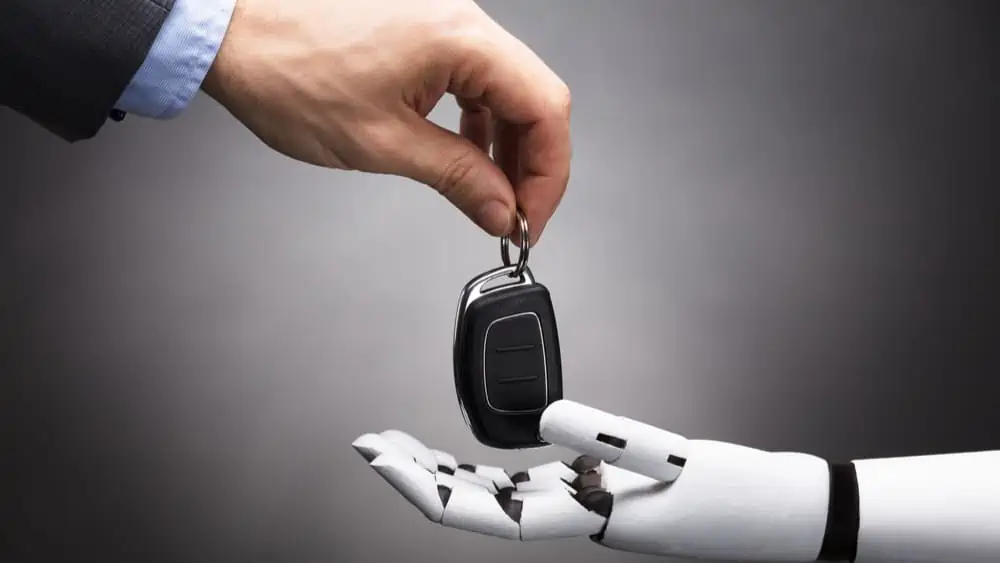When the bus suddenly pulls into the right-hand lane, the autopilot briefly goes into a spin – the robotaxi brakes abruptly on an open road. As a result, a truck behind it passes on the left – the autopilot has to counter-steer quickly.
If you want to get from A to B in the Yizhuang district of China’s capital Beijing, which is characterized by factories and tall office towers, you can now order a self-driving cab without a driver.
In terms of price, it is definitely worth it: the 8.4-kilometre journey costs just over eleven yuan, the equivalent of around 1.40 euros. Robotaxi providers are undercutting prices in the already low-cost taxi business and want to stay ahead of the game.
However, the steering wheel in the electric car, which turns as if by magic, does take some getting used to. Unlike other road users, the car stoically sticks to the specified 50 kilometers per hour. At the slightest danger, the computer brakes inhumanly fast in the truest sense of the word.
More than 30 cities in China have issued test licenses for autonomous driving. Robot cabs are more common in the megacities. In Beijing, however, there is still a human in the driver’s seat who can take the wheel in an emergency. Wuhan in central China, which gained notoriety as a result of the coronavirus pandemic, is already further ahead: around 100 cabs from Apollo Go are already driving there without assistance. The provider is backed by tech giant Baidu, China’s equivalent of Google. The cab is called using a cell phone app. To open the back door, the passenger scans a code. Inside, a pin previously received by text message is entered on a screen – and off they go.
Robotaxis not popular with everyone
In Beijing, with its six rings of freeways and often congested roads, robotaxis are currently only allowed to drive in certain areas away from the city center. But cab drivers are already annoyed: if one of the delivery drivers is not driving in the normal lane with the scooter, the robotaxi cannot handle it, says Mr. Li, who works for one of the many Chinese driving services similar to Uber. “The road conditions are simply very complex.” The robotaxis therefore often drive more slowly or brake out of caution.
Not far from the test area, cab driver Hao is charging his electric car. He doesn’t see much competition from the self-driving rivals. “Beijing is full of people who are in a hurry,” he says. The robot cabs are not as flexible as real drivers, who adapt the route for their passengers who want to get to the station or work quickly, he says as he pulls the charging cable out of the typical orange and blue cab. He is therefore not worried about the future. “If this doesn’t earn me any more money, I can switch to another job,” he says.
Some skepticism prevails in Germany
In Germany, Chinese conditions in the cab industry are still a dream of the future. The legal framework in Germany is stricter and requires a high level of safety and liability for the systems, says Philipp Kupferschmidt from management consultancy Accenture. “On the other hand, there is also greater skepticism and reluctance on the part of consumers towards autonomous driving in Germany.”
Unsurprisingly, according to Pedro Pacheco, automotive analyst at market research firm Gartner, Germany has far fewer companies working in this field in comparison. So far, electric Volkswagen Bullis have been cruising the streets of Munich and Hamburg in partnership with the software company Mobileye – albeit in test mode. In Hamburg, customers will be able to test drive them this year.
What consumers can expect
According to Peter Fintl, industry expert and Vice President for Technology and Innovation at Capgemini Engineering, Germany played a key role in the development of autonomous driving back in the 1980s. However, the development paths split. In China and the USA, manufacturers were more focused on achieving fully automated operation. In Germany, manufacturers opted for the “evolutionary approach”, says Fintl – in other words, to further develop existing driver assistance systems.
So what can consumers in Germany expect from the technology? Kupferschmidt expects a gradual introduction and expansion of the field of application of autonomous vehicles and robotaxis. The cars would still mainly be monitored and accompanied by a human or a remote control. However, it is unclear whether the technology will ever operate at level 5 – the supreme discipline, so to speak, in which the car takes over everything. “Looking at the current task-based AIs, I doubt it,” says Kupferschmidt.
Further launches to come
The legal basis had already been laid down by the legislator. For example, a self-driving shuttle bus can operate in designated and approved areas such as trade fair grounds. Autonomous driving is already an issue for major manufacturers such as BMW, Mercedes and Volkswagen. However, level 5 is still a long way off. However, many people will be familiar with functions from level 2, such as automatic parking.
Fintl notes: “Partial automation, such as the highway pilot, has made the leap into series production.” The introduction of such systems in the middle class is imminent. When it comes to robotaxis on German roads, however, the competition is – according to him – a length ahead: even if the technology still has to mature further and the cost advantages compared to human drivers still have to be proven, the large test fleets in the respective countries are a significant advantage, he says.
dpa

